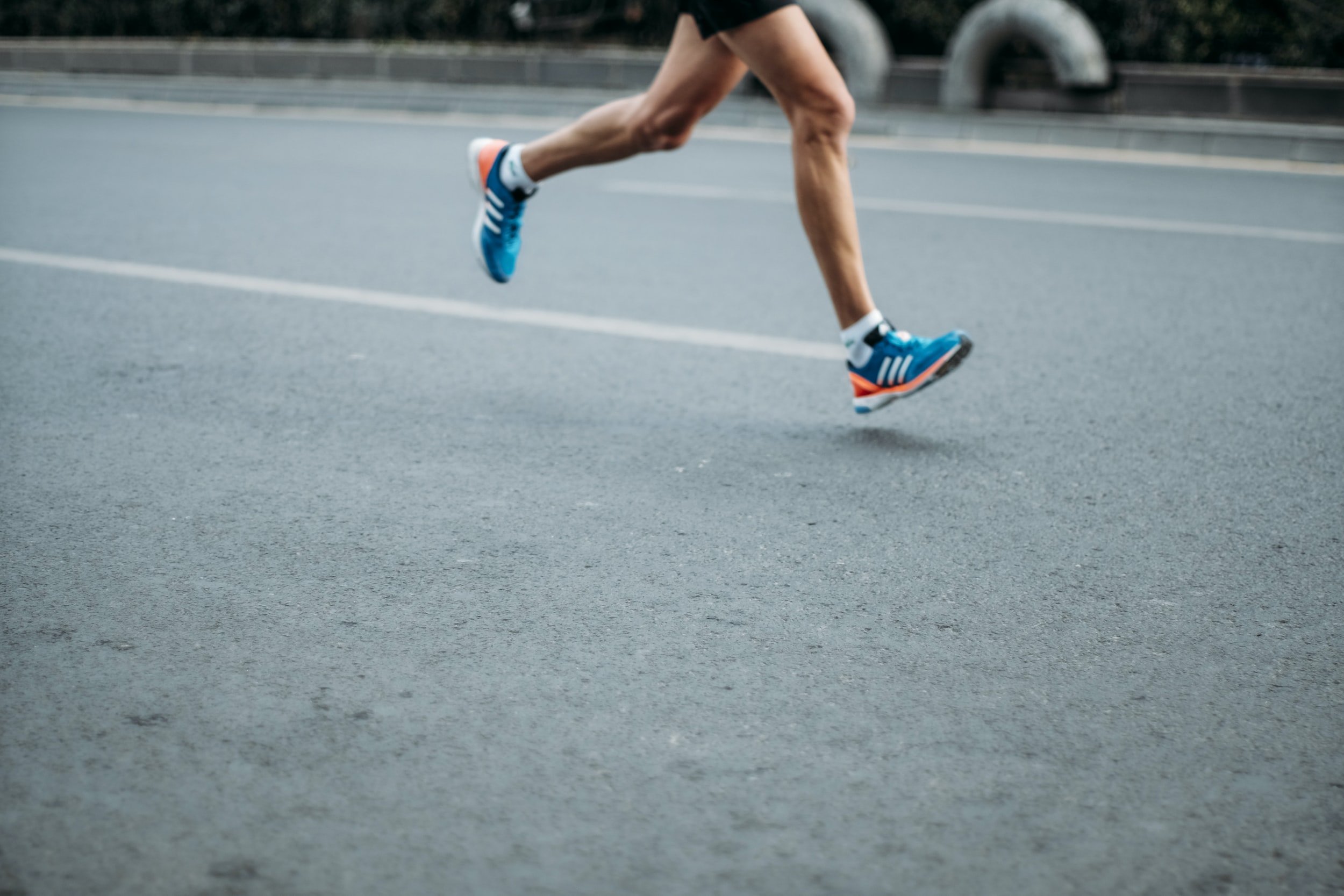Shin Splints
Medial tibial stress syndrome, commonly known as shin splints, is a condition that is caused by exercise-induced repetitive stress along the inner border of the tibia, or the shin bone. Initially, pain starts at the beginning of exercise and subsides both during exercise and after rest. As the condition progresses, pain will present with less activity and may occur during inactivity (4). Risk factors include recent onset of increased movement, increased intensity, increased duration, running on hard or uneven surfaces, and inadequate footwear. Shin splints are most common in athletes and military personnel, affecting up to 20% of athletes and 35% of the military population (9,10).
Pain is typically increased with loading stress such as running and jumping, and is provoked with palpation over an area of the inner tibia of more than five centimeters (8). Presentation of shin splints differs from a stress fracture due to shin splints covering a distance of a few centimeters while a stress fracture is painful in one specific location (6). The cause of shin splints is often multifactorial including biomechanical abnormalities and training errors. Dysfunction of the tibialis posterior, tibialis anterior, and soleus are often a concern (1). Weakness of the calf muscles leads to higher likelihood of muscle fatigue, leading to altered running mechanics which can increase stress on the tibia.
Physical therapy can help determine the primary cause of shin splints. Frequently, strengthening of the calf muscles will be indicated. In addition, there may be muscle imbalances between the quadriceps and hamstrings muscles, weakness of pelvic musculature, weak intrinsic foot musculature, restrictions in hip and/or ankle range of motion, as well as other limitations (4, 7). Physical therapy will also include proprioceptive training, which will improve muscle control and educate the body to react to unsuspected movement. Shin splints often include faulty running mechanics, requiring a running assessment upon examination. Addressing running technique and prescription of a graded running program are suggested to gradually load tissue in order to withstand the stresses applied (6).
Joint mobilizations to restore hip and ankle range of motion are fundamental, along with soft tissue mobilizations to address soft tissue restrictions (5). Although there is limited research, some studies show that dry needling in addition to traditional exercise significantly reduced pain and reduced use of anti-inflammatory medication for shin splints (2). Dry needling can improve pain and disability and is able to treat trigger points and muscle imbalances in muscles of the lower leg. However, the key to treating shin splints is to reduce tibial stresses without altering training goals.
Appropriate footwear may also reduce the incidence of shin splints. Shoes should have sufficient shock-absorption in the soles which can reduce the forces through the tibia and reduce the risk of recurrent episodes of pain (1). Runners should change their running shoes every 500 miles due to shoes losing their shock absorption (3). Additionally, shock-absorbing insoles and pronation control orthotics may be suggested. At Dynamic Physio, we’re able to do an assessment to determine the need for custom orthotics.
While there are rarely any serious consequences with shin splints, the condition can be severely debilitating and limiting to physical activity. With proper diagnosis and treatment, one can return to activity without restrictions and self-manage their condition.
References
1. Beck B. Tibial stress injuries: an aetiological review for the purposes of guiding management. Sports Med. 1998;26(4):265–79.
2. Callison, M.. (2002). Clinical study: Acupuncture & tibial stress syndrome (Shin splints). Journal of Chinese Medicine. 24-27.
3. Cook S, Kester M, Brunet M. Shock absorption characteristics of running shoes. Am J Sports Med. 1985;13:248–53.
4. Galbraith, R.M., Lavallee, M.E. Medial tibial stress syndrome: conservative treatment options. Curr Rev Musculoskelet Med 2, 127–133 (2009). https://doi.org/10.1007/s12178-009-9055-6
5. Greenman P. Principles of manual medicine. 3rd ed., chap. 11. Philadelphia, PA: Lippincott Williams & Wilkins; 2003: p. 337–403, 489.
6. Lohrer, H., Malliaropoulos, N., Korakakis, V., & Padhiar, N. Exercise-induced leg pain in athletes: diagnostic, assessment, and management strategies. The Physician and sport medicine. 2018
7. Moen MH, Bongers T, Bakker EW, Zimmermann WO, Weir A, Tol JL, Backx FJ. Risk factors and prognostic indicators for medial tibial stress syndrome. Scand J Med Sci Sports. 2012 Feb;22(1):34-9. doi: 10.1111/j.1600-0838.2010.01144.x. Epub 2010 Jun 18.
8. Winters, M. Medial tibial stress syndrome: diagnosis, treatment and outcome assessment (PhD Academy Award). Br J Sports Med. 2018
9. Winters, M., Bakker, E. W. P., Moen, M. H., Barten, C. C., Teeuwen, R., & Weir, A. Medial tibial stress syndrome can be diagnosed reliably using history and physical examination. Br J Sports Med. 2018; 52(19): 1267-1272
10. Winters, M., Eskes, M., Weir, A. et al. Treatment of Medial Tibial Stress Syndrome: A Systematic Review. Sports Med 43, 1315–1333 (2013). https://doi.org/10.1007/s40279-013-0087-0

